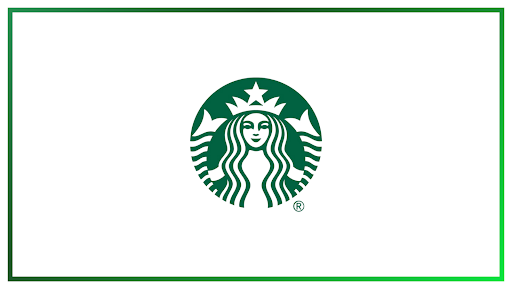Brewing Success: Starbucks' Smart Pricing Strategy for Every Market

Starbucks with over 35,000 stores across 86 markets worldwide, has mastered the art of localized pricing to maintain its premium brand positioning while adapting to vastly different economic landscapes.
This case study examines how Starbucks implements sophisticated market-specific pricing strategies that have enabled its successful global expansion while preserving its core brand identity as a premium coffee experience.
Starbucks' Strategic Pricing Philosophy
Starbucks employs a nuanced pricing strategy that balances several key objectives:
- Maintaining premium brand positioning globally
- Adapting to local purchasing power and economic conditions
- Reflecting regional operational costs and competitive landscapes
- Creating market-appropriate value perception
- Providing accessibility to core offerings while preserving premium status
Global Price Variation Analysis
Starbucks prices vary significantly across markets. The table below shows the prices of a Tall Latte across different markets as of January 2025:
Timeline of Starbucks' Localized Pricing Evolution
Starbucks' approach to internationalization and localized pricing has evolved considerably over time:
- 1996: First international store outside North America opens in Japan with premium pricing (40% above US prices)
- November 1998: Entry into Thailand with prices approximately 15% lower than US equivalents to accommodate local purchasing power
- January 2000: Entry into China as a luxury brand with prices higher than US counterparts relative to local income
- February 2004: Introduction of market-based pricing models that incorporate local economic indicators
- March 2007: Implementation of "tiered market pricing" categorizing countries into economic brackets
- June 2011: Launch of the "Accessible Premium" strategy in emerging markets with locally adjusted price points
- August 2014: Introduction of data-driven regional price optimization system
- October 2018: Implementation of dynamic pricing trials in select US markets
- April 2021: Rollout of AI-powered pricing models that incorporate local competition, customer behavior, and economic indicators
- January 2024: Launch of enhanced market segmentation strategy with micro-region pricing within countries
Starbucks' Localized Pricing: How Coffee's Global Giant Balances Premium Positioning with Regional Accessibility
The Starbucks Global Pricing Challenge
With over 35,000 stores across 80+ countries, Starbucks faces one of the most complex localized pricing challenges in retail. How does a brand maintain its premium positioning while adapting to dramatically different economic landscapes—from Manhattan to Mumbai, Oslo to Mexico City?
Starbucks' Multi-Layered Pricing Strategy
1. Store Operating Cost Analysis
Starbucks factors in the total cost of operations in each market:
- Real estate costs (prime locations in each city)
- Labor costs (with dramatically different wage standards)
- Supply chain expenses (including import duties for coffee beans)
- Regulatory compliance costs
- Utilities and infrastructure costs
2. Market Positioning Decisions
In each market, Starbucks makes strategic decisions about their competitive positioning:
- Premium luxury positioning in developing markets like China and India
- Accessible premium positioning in the United States
- Competitive mid-market positioning in high-coffee-consumption European markets
- Destination experience positioning in markets with strong local coffee traditions
3. Menu Engineering by Market
Perhaps most interestingly, Starbucks varies not just prices but entire menu offerings:
- Higher-income markets feature more extensive premium options (Reserve coffees, limited editions)
- Developing markets feature more accessible entry points (smaller sizes, more straightforward options)
- Regional flavors and preferences are incorporated (matcha options in Asia, specific milk alternatives by region)
- Local competitive specialties are countered with market-specific offerings
4. Price Architecture vs. Single Product Pricing
Starbucks doesn't simply adjust individual product prices—they engineer entire "price ladders" for each market:
- The price gap between sizes varies by market
- The premium charged for milk alternatives differs regionally
- Seasonal promotion strategies adapt to local spending patterns
- Food attachment pricing strategies vary based on local eating habits
Implementation Through Technology
Managing this complexity requires sophisticated systems:
The Starbucks Digital Flywheel
Starbucks' industry-leading mobile app and loyalty program provide crucial data for localized pricing optimization:
- Purchase pattern analysis by location and demographics
- Price sensitivity testing through targeted promotions
- Product mix optimization across different markets
- Dynamic promotional pricing based on real-time sales data
Global-Local Balance
Starbucks maintains a careful balance between global consistency and local adaptation:
- Core brand elements remain consistent worldwide
- Pricing strategy frameworks are developed centrally
- Regional teams have implementation flexibility
- Price changes require multi-level approval based on the magnitude
Case Study: Starbucks in China
Starbucks' approach to China exemplifies its sophisticated localized pricing strategy:
Initial Market Entry (1999)
- Positioned as an ultra-premium luxury experience
- Prices set approximately 40% higher than the US relative to local purchasing power
- The limited menu focused on signature drinks
- Targeted business districts and luxury shopping areas
Growth Phase (2010-2015)
- Gradually introduced lower-priced options as competition increased
- Expanded into second-tier cities with adjusted price architecture
- Introduced China-specific products at strategic price points
- Maintained premium on core products while creating accessibility through promotions
Maturity Phase (2016-Present)
- Sophisticated regional pricing within China
- Tier-based pricing strategy for different city categories
- Digital ordering with personalized pricing and promotions
- A balance between premium positioning and market growth
The results speak for themselves—China is now Starbucks' second-largest and fastest-growing market with over 6,000 stores and plans for 9,000 by 2025.
Measurable Results of Localized Pricing
Starbucks' localized pricing strategy has delivered remarkable results:
- Consistent global same-store sales growth despite widely varying economic conditions
- Stronger than expected performance in developing markets
- Maintained premium positioning while achieving mass-market penetration
- Industry-leading profit margins across diverse operating environments
- Successful defense against local competitors in established markets
Challenges and Criticisms
Starbucks' approach isn't without challenges:
- Price Perception Issues
The Internet has made regional price differences more transparent, leading to:
- Social media complaints about "Starbucks tax" in specific markets
- Travel blogs highlighting dramatic price differences
- Challenges explaining price differences to global mobile customers
- Price-Value Relationship
In some markets, Starbucks struggles with the perception that their prices don't reflect local value expectations:
- Backlash in Italy where coffee culture expects lower prices
- Challenges in markets with strong local coffee traditions
- Resistance in markets during economic downturns
- Currency Fluctuation Risks
With operations in 80+ countries, Starbucks faces significant currency risks:
- Dramatic swings in emerging market currencies
- Profit margin compression during currency devaluations
- Challenges in timing necessary price adjustments
The Future of Starbucks' Localized Pricing
As Starbucks continues to evolve, so does their pricing strategy:
- AI-driven personalized pricing through their mobile app
- More granular regional price tiers within countries
- Dynamic time-of-day pricing in select markets
- Subscription models with market-specific pricing
- Integration of delivery pricing into overall strategy
Key Takeaways from Starbucks' Approach
Starbucks' success with localized pricing offers valuable lessons for any global retail brand:
- Price architecture trumps individual prices: The relationship between products matters more than absolute prices
- Digital tools enable sophistication: Mobile apps and loyalty programs provide crucial data for optimization
- Brand positioning varies by market: The same brand can occupy different competitive positions regionally
- Menu engineering complements pricing: What you sell is as important as how you price it
- Long-term strategy requires pricing flexibility: Market development depends on strategic pricing evolution
By balancing global brand consistency with local market relevance, Starbucks has created a localized pricing approach that supports both its premium positioning and its ambitious growth goals. Their strategy demonstrates that effective pricing isn't just about numbers—it's about creating a coherent value proposition that resonates in each unique market context.
Sources and Citations
- Starbucks Corporation. (2024). "Starbucks Fiscal 2023 Annual Report." Retrieved from https://investor.starbucks.com/financial-data/annual-reports/
- Quelch, J., & Jocz, K. E. (2022). "Starbucks: Global Strategy and Local Adaptation." Harvard Business School Case Study 9-511-033.
- Euromonitor International. (2023). "Starbucks Global Market Strategy Analysis: Pricing and Positioning." Euromonitor International Coffee Market Report.
- Wall Street Journal. (2023). "Starbucks' China Strategy: Pricing for Growth in a Competitive Market." Wall Street Journal Business Section, April 18, 2023.
- Schultz, H., & Gordon, J. (2011). "Onward: How Starbucks Fought for Its Life without Losing Its Soul." Rodale Books.
- J.P. Morgan. (2023). "Global Coffee Retail Sector Report: Starbucks Pricing Analysis." J.P. Morgan Industry Analysis.
- Starbucks Corporation. (2023). "Press Release: Starbucks Reaches 34,000 Stores Globally." Retrieved from https://stories.starbucks.com/press/
- Mintel. (2024). "Global Coffee Shop Market Report: Pricing Strategies Analysis." Mintel Market Research.
- Deloitte. (2023). "Global Powers of Consumer Products 2023: Starbucks Case Study." Deloitte Consumer Business Report.




